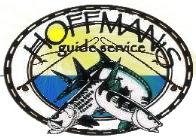home - rates - directions - faqs - other info
What can we fish for in the backcountry?
Bonefish & Permit…
The Bonefish is truly the "Gray Ghost" of the flats! They are covered with mirror like scales which provide them with amazing camouflage.They are also extremely wary of their surroundings. These two characteristics can make them quite a challenge to catch! This type of fishing requires a stealthy approach and accurate presentation. They possess a deeply forked tail and streamlined body, which makes for a blazing first run. Usually, they will rip off one hundred yards of line in a matter of seconds. A Permit is perhaps one of the toughest gamefish to fool. They inhabit the deeper edges of flats and are every bit as hard, if not harder, to catch than Bonefish. These broad fish put up a lengthy battle, seemingly not ever wanting to give up. These fish are best pursued on a light spinning rod with a reel capacity of at least one hundred and fifty yards of ten pound test line. Practice your casting! Your success for the day heaviliy weighs on your ability to cast correctly. Bonefish and permit are always moving and need a fast, accurate cast. The typical fly fishing outfit is a nine weight rod and matching reel with the same capacity. Weight-forward floating lines are the most commonly used. The ability to single, double and water haul your fly line is very important, as these fish tend to move quickly and change direction frequently. Learn to shoot line on the forward and backcast! Practice your spin casting as well! We are able to catch them year round.. Spring and Fall offer us the best weather conditions.
Tarpon...
The "Silver King" of the Keys! A baby Tarpon starts at around 2-5 pounds while the adults can average eighty to over one hundred and fifty pounds. Beginning about mid April, these large fish migrate throughout the Keys and peak at about May and are here till mid July. The smaller fish can be caught on lighter rods of ten pound class. The larger fish are caught on 20 pound spinning tackle while sight fishing the edges of flats. Depending on the size of the fish, the battle can last from twenty minutes to over two hours. Upon hooking one, they can put on an unbelievable aerial performance. You'll see the tarpon coming, make your cast and hold on for dear life! Year after year, clients come back to do battle with the Silver King, it's just that exciting! Whether a novice angler or seasoned fly fisherman, you can do this! Fly fishing tackle gets a little larger with the big boys. Ten to twelve weight rods are the norm. Once again, if fly fishing, better to practice before your charter. The ability to cast quickly and accurately with a minimum of false casting will have a dramatic impact on the success of the day. Your casting accuracy whether on fly or spin is paramount. Though they are caught infrequently throughout the year, our tarpon "season" starts about mid April and winds up about mid July. There is also a smaller run of tarpon in the Fall.
Snook & Redfish...
These fish are a bit more angler friendly and tolerant of a misplaced cast for the novice angler. They are found on the backcountry flats of the Everglades National Park. There is nothing prettier than a quiet morning back in Florida Bay, searching for those squared redfish tails rising above the calm surface. Eight pound spinning tackle and an eight weight fly rod are a great match for them. The snook are usually found cruising the flats along with the reds. My snook fishing is limited to sight fishing the flats. I do not bobber fish for them along the mangrove islands. Please note, there is a lengthy, scenic boat ride to do this kind of fishing. It may be as little as 30 minutes or as much as 50 minutes to get to the best fishing. Snook are primarily happier in the warmer months. Any cold weather tends to shut them down.. Redfish are pursued year round.. with bigger schools found in the Fall
Sharks and Barracudas...
The flats of the Florida Keys offer several other species to catch. Although usually encountered while fishing for the other species, these toothy critters still provide quite a pull. The Barracuda has a slashing attack when striking your bait. They'll zip out line almost as quick as a Bonefish and also provide an aerial battle for you. Larger Barracuda are most actively pursued in the Winter months. The sharks you'll encounter average about five to fifteen pounds in weight and include the Lemon, Bull, Blacktip and the Bonnethead. We can pursue larger sharks in the Summer.
Seatrout, Jacks and Ladyfish...
These are our "fun-fish". They are easier to catch than the other species and can provide a bit more action for the novice angler/child and family outings. These fish are found back in Florida Bay, the southernmost region of the Everglades National Park. This is a more relaxed type of fishing, the accurate casts and vision needed with the other species is not required. A camera is definitely needed. The Mangrove islands and wildlife surrounding them, provide many spectacular pictures. Please note, there is a lengthy, scenic boat ride to do this kind of fishing. It may be as little as 30 minutes or as much as 50 minutes to get to the best fishing.Seatrout are most abundant in the cooler months.
